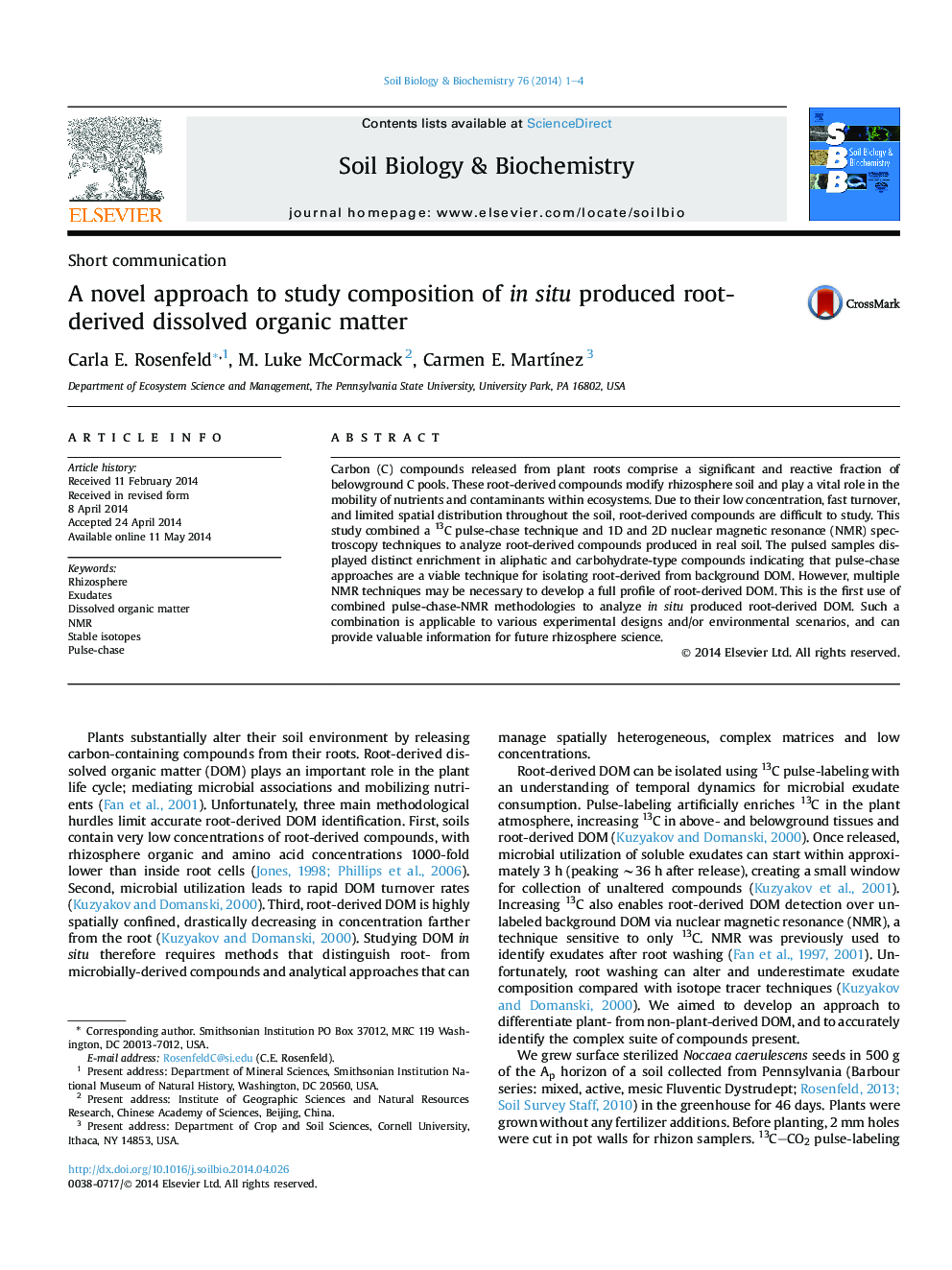| Article ID | Journal | Published Year | Pages | File Type |
|---|---|---|---|---|
| 8364501 | Soil Biology and Biochemistry | 2014 | 4 Pages |
Abstract
Carbon (C) compounds released from plant roots comprise a significant and reactive fraction of belowground C pools. These root-derived compounds modify rhizosphere soil and play a vital role in the mobility of nutrients and contaminants within ecosystems. Due to their low concentration, fast turnover, and limited spatial distribution throughout the soil, root-derived compounds are difficult to study. This study combined a 13C pulse-chase technique and 1D and 2D nuclear magnetic resonance (NMR) spectroscopy techniques to analyze root-derived compounds produced in real soil. The pulsed samples displayed distinct enrichment in aliphatic and carbohydrate-type compounds indicating that pulse-chase approaches are a viable technique for isolating root-derived from background DOM. However, multiple NMR techniques may be necessary to develop a full profile of root-derived DOM. This is the first use of combined pulse-chase-NMR methodologies to analyze in situ produced root-derived DOM. Such a combination is applicable to various experimental designs and/or environmental scenarios, and can provide valuable information for future rhizosphere science.
Related Topics
Life Sciences
Agricultural and Biological Sciences
Soil Science
Authors
Carla E. Rosenfeld, M. Luke McCormack, Carmen E. MartÃnez,
